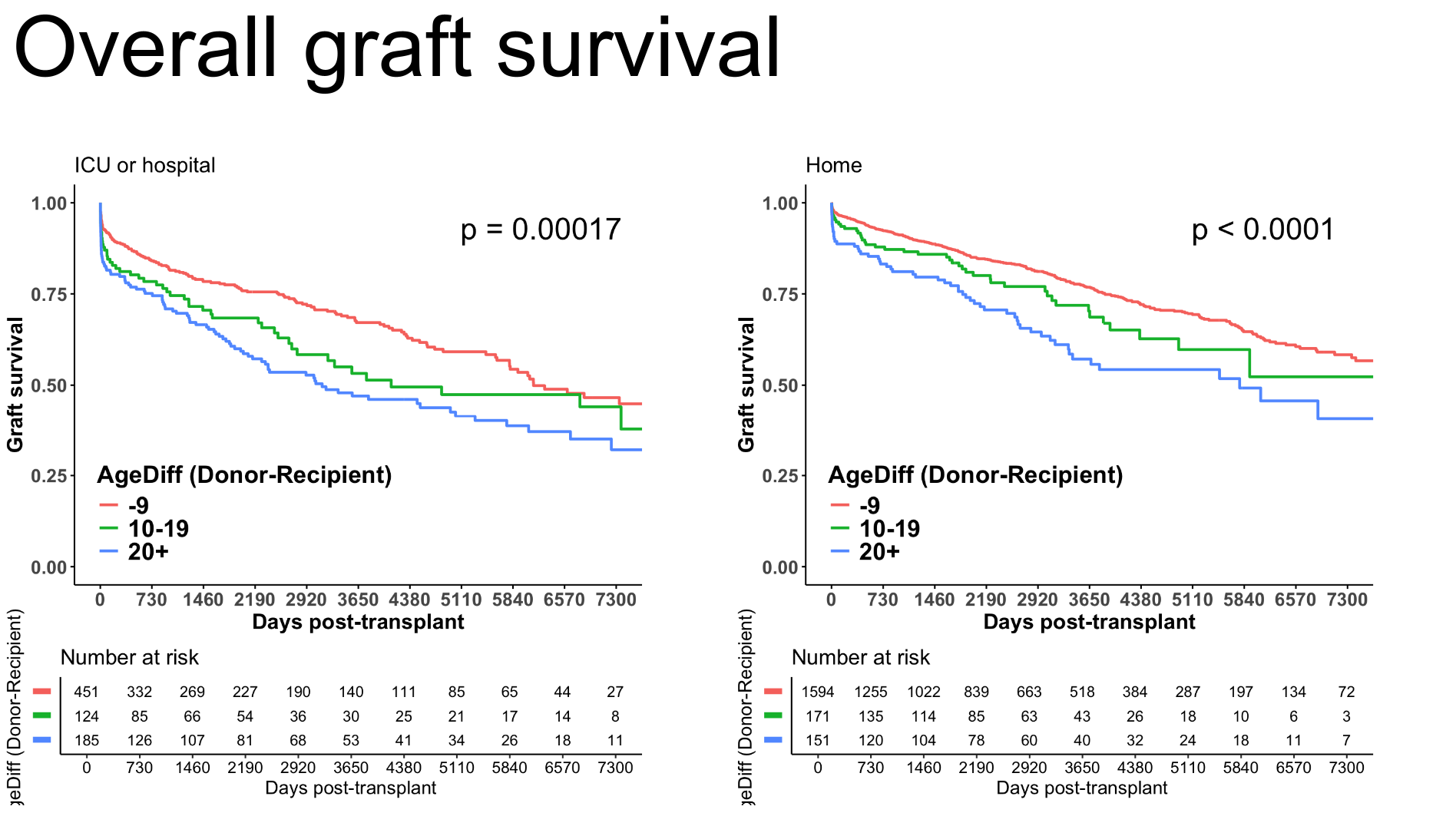Pediatric liver transplant age matching improves graft survival
Amanda Jensen1, Toshihiro Nakayama1, Kazunari Sasaki1.
1Division of Abdominal Transplant Sugery, Stanford Health Care, Palo Alto, CA, United States
Introduction: Pediatric liver transplantation outcomes improve when donors and recipients are age-matched. We hypothesized that graft survival would be longer when children received age-matched donor livers.
Methods: The United Network of Organ Sharing database was reviewed for pediatric deceased donor liver transplant patients ≤18 years of age undergoing liver transplantation from 2000-2024. Recipients were divided into 3 groups: 1) age difference of less than 9 years, 2) age difference of 10-19 years and 3) age difference of 20+ years. We additionally separated out whether they were admitted to ICU/hospital or came from home. Primary outcomes examined included overall graft survival, graft survival after 1 year and 5 years. Cofounders examined included type of graft, age of donor, cold ischemia time, pediatric diagnosis, PELD score, and time on wait list.
Results: There were a total of 2, 691 patients included. By group, 2,059 patients had age difference between recipient and donor of less than 9 years, 295 within 10-19 years and 337 of 20+ years. Overall graft survival, graft survival after 1 year and graft survival after 5 years were all significantly longer when there was less of a difference in age between donor and recipient.
Conclusion: If children are stable, we should age-match deceased donor livers to pediatric recipients when able. Long term graft survival is demonstrated to be superior when donor and recipient are closer in age.

The WebApp is sponsored by:

If you have any questions during the meeting, please go to the registration desk. Our emails will be monitored sporadically.
REGISTRATION DESK OPENING TIMES
Thursday, May 1, 2025, 07:00-17:30 Friday, May 2, 2025, 07:00-12:00